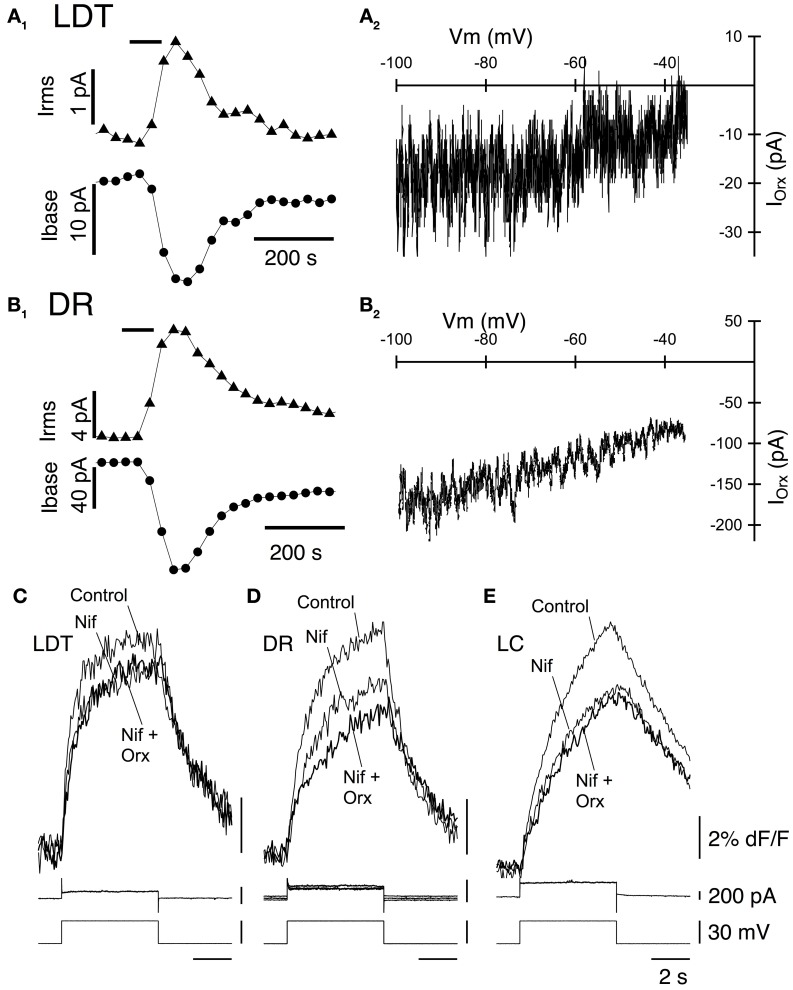Figure 4.
Stimulation of OX1 alone activates a noisy cation current in LDT and DR neurons and enhance voltage-dependent Ca2+ transients mediated by L-type Ca2+ channels in LDT, DR, and LC neurons. (A1) Holding current (at −60 mV; Ibase; bottom trace) and membrane current noise (Irms; top trace) were measured every 30 s starting before bath application of 300 nM orexin-A (horizontal bar) from LDT neurons in OX−/−2 slices. Orexin produced an inward shift in holding current that was accompanied by an increase in current noise. (A2). The I-V curve of the orexin-evoked inward current (IOrx) was obtained by subtracting the membrane current produced by a voltage ramp between −100 and −35 mV prior to orexin-A application from that obtained during the peak of the orexin-A-evoked inward current. These currents were similar to those obtained from LDT neurons in C57BL6 slices. (B1) Orexin-A (300 nM) has a similar, but larger effect on the holding current (Ibase, bottom) and membrane current noise (Irms, top) in DR neurons recorded in OX−/−2 slices. (B2) The I-V relation for the orexin-evoked inward current (IOrx) in a DR neuron from an OX−/−2 slice was similar that that observed in DR neurons from C57BL6 slices. (C,D,E). The L-channel antagonist, nifedipine (10 μM) attenuated the Ca2+-transients evoked by voltage-steps from −60 to −30 mV in LDT (C), DR (D), and LC (E) neurons from OX−/−2 slices and completely blocked the enhancement of these transients by orexin-A (300 nM). Top traces show somatic Ca2+-dependent fluorescence (dF/F); Middle traces show whole-cell current; Bottom traces show membrane voltage. Calibration bar labels in (E), also apply to (C) and (D).

